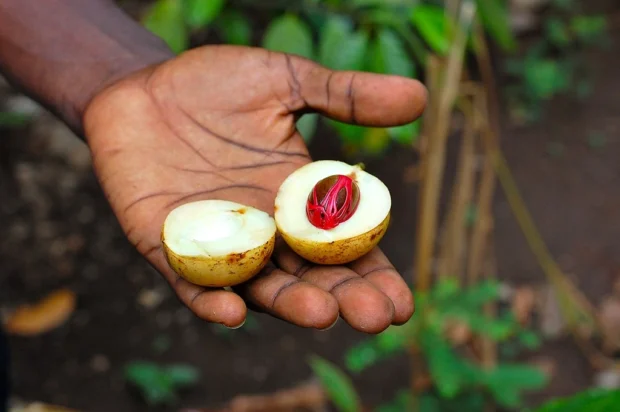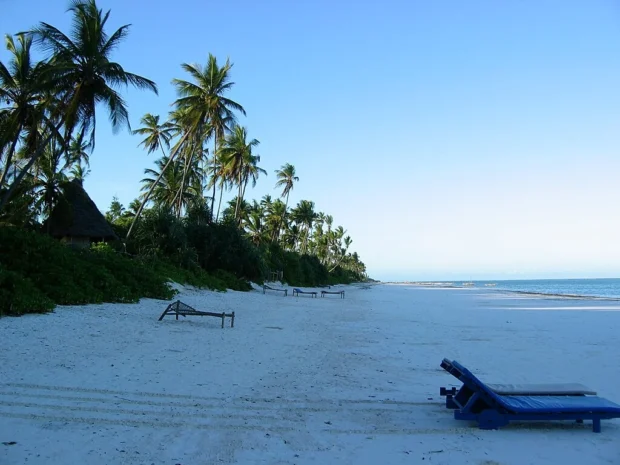Zanzibar is an island off the coast of Tanzania, East Africa. It often surprises visitors with its warm beaches and rich history. While many think of it as just a sunny beach place, Zanzibar has stories and culture woven into its every corner. From the buzzing Stone Town markets to the quiet spice farms, the island reveals more than just beauty. This guide will help you understand what to see and do, how to get around, and what makes Zanzibar special beyond its surface.
Table of Contents
Wandering Through Stone Town’s Narrow Streets
Stone Town is the heart of Zanzibar City. The moment you step into its maze of narrow alleys, you feel the layers of history. Houses made of coral stone lean close to each other, with old wooden doors carved in Arabic style. The air here carries a mixture of spices, ocean breeze, and the voices of street vendors selling everything from fresh fruit to handwoven mats.
For those intrigued by vibrant coastal cultures, exploring Izmir’s unique sights and flavors offers a rich continuation of discovering diverse traditions and markets.

One of the landmarks you can’t miss is the House of Wonders (Beit-al-Ajaib). It stands tall with its large balconies and old elevators, a reminder of the Sultanate era. Though parts of it are closed for renovations, its commanding presence is a good starting point for those interested in Zanzibar’s past. For a detailed view of Stone Town’s cultural heritage, visitors often join guided walks, though simply losing yourself in its lanes gives an unforgettable experience.
Stone Town’s markets also offer surprises. Beyond the typical spice stalls, some corners host local artisans crafting wooden dhow ships or making traditional mat weaving. Speaking with a craftsman, I learned how these mats are dyed using natural colors from tree bark-a craft passed down through generations.

Where to Stay: Comfort Meets Culture
Zanzibar offers accommodations for many tastes, from guesthouses in old Stone Town homes to eco-lodges near the beach. Staying within Stone Town lets you walk to most sights and enjoy morning coffee at corner cafes where fishermen sell their fresh catch. In neighborhoods like Mizingani, you can find dhow boats tied up at the harbor, offering a peaceful view in the early morning.
For a different blend of history and local life, explore Porto Portugal’s lively streets and markets, where art and food create another vibrant culture.
If you prefer beachside tranquility, towns like Nungwi and Kendwa on the northern tip offer white sands and calm waters. These places often have small lodges run by local families, helping visitors connect more closely with community life. While resorts exist here, choosing a smaller place supports local businesses and gives a more personal touch.

Easing Around Zanzibar: Tips for Transport
Getting from Abeid Amani Karume International Airport to Stone Town is straightforward. Many guests use shared minibuses called dala-dalas, which are an affordable way to travel but require some patience and a sense of adventure. These minibuses leave when full, rather than at set times. Walking or renting a bicycle within Stone Town is common, as the streets are small and bustling.
Between towns, dala-dalas connect most places, including the popular beach areas and spice farms. While the rides can be crowded, they offer a chance to see island life from inside a local bus, chatting with friendly passengers. Alternatively, bicycle and scooter rentals allow visitors to explore at their own pace, especially down quiet back roads and spice plantations.

Spices and Stories: Visiting the Spice Farms
One of Zanzibar’s best-kept attractions is its spice farms. Called “the Spice Island,” Zanzibar’s history is built on cloves, nutmeg, and cinnamon. Local families grow these spices in small farms scattered around the island.
Visiting a spice farm is more than smelling fresh spices. Guides show how the plants grow and share stories about how these spices have shaped Zanzibar’s trade and culture. I remember tasting a small piece of nutmeg right from the tree-its sharp aroma was strong, a surprise compared to the sweet smell in stores.

These tours often end with traditional chai tea flavored with freshly ground spices. It’s a small but meaningful way to connect with local traditions, and many farms offer artisanal products you can buy directly.
Taste of Zanzibar: Food to Try in Different Districts
Zanzibari cuisine reflects the island’s history as a crossroads between Africa, Arabia, India, and Europe. In Stone Town’s Forodhani Gardens, street food vendors gather in the evening, grilling fresh seafood like octopus and prawns over open fires. The mixture of spices, charcoal smoke, and ocean salt fills the air. Here, don’t miss sampling the famous Zanzibar pizza-a crispy crepe filled with meat, egg, vegetables, or cheese, cooked on a hot grill.

Further inland, in areas near spice farms, dishes often come with more local flavors like cassava, fresh coconut, and mango chutney. Meals are usually shared and eaten with hands, adding to the communal feel. I once joined a family meal where we enjoyed biryani rice wrapped in banana leaves. The aroma alone was unforgettable.
Cultural Ways and Customs to Remember
Zanzibar has a mix of traditions, mostly influenced by Islam. When visiting, it’s good to dress respectfully, especially in Stone Town where modest clothing is appreciated. Covering shoulders and knees helps respect local customs. Public displays of affection are generally avoided. Many locals speak Swahili and are welcoming to visitors who attempt a few words.

During Ramadan, a holy month of fasting, you will notice changes in daily life. Eating or drinking in public during daylight hours is usually avoided out of respect. That said, if you are open and polite, people often share stories about their practices, revealing the island’s deep sense of community.
Engaging with the local culture through music and dance is rewarding. Taarab music, a blend of Arab and African sounds, often plays at weddings and public celebrations. Catching a live performance, even informally on the street, adds a layer of understanding to the island’s vibrant soul.

Quiet Corners and Less Known Places to Visit
Outside the busy tourist spots, Zanzibar offers peaceful retreats. On the southeast coast, villages like Jambiani provide calm beaches and a chance to watch seaweed farmers at work. These farmers collect and dry seaweed for export, a tradition mostly done by women. Walking along the shore at low tide, you see rows of seaweed hanging under the sun-an unusual but beautiful sight.
Another spot worth visiting is the mangrove forests near the village of Fumba. Small boats can take you through narrow channels lined with thick roots and birdlife. It feels like entering a quiet world where nature thrives undisturbed. Some group tours combine boat rides with visits to nearby fishing villages, offering a glimpse of daily life.

Historic Legends and Architecture Stories
Many buildings in Stone Town have stories beyond the surface. One of them is the Old Fort, built in the late 1600s, which has served as a defense post, prison, and now as a cultural center. Locals tell tales that the fort was once haunted by the spirits of prisoners, adding mystery to its walls.
If Zanzibar’s spice farms and coastal charm inspire you, the rich medieval walls and vibrant streets of Dubrovnik Old Town offer a fascinating follow-up destination along the Adriatic.
The Sultan’s Palace, facing the sea, offers views of the harbor where dhows have arrived for centuries. It was home to Zanzibar’s royal family, and inside you find displays that tell stories of the Swahili coast’s royal life and colonial struggles. When I visited, I was struck by the intricate wooden carvings and the peaceful garden where dates and mangoes grow.
Visiting these places, you feel a connection to Zanzibar’s layered past-where African, Arab, Persian, and European influences met, clashed, and blended over centuries.
Zanzibar is not just an island to relax on; it is a place that invites you to listen carefully, see differently, and feel the pulse of history and culture in every smile and scent. Whether walking Stone Town’s alleys, tasting spiced dishes, or watching the sun set over mangroves, Zanzibar leaves a quiet impression that lasts long after you leave.

Anthropologist and traveler admiring local customs, festivals and traditional arts.
- Hotel Mizingani Seafront, Stone Town, Zanzíbar, Tanzania, 2024-05-31, DD 23 by Diego Delso on Wikimedia Commons – cc by-sa 4.0
- Nungwi (2010-011-1318-T) by Moongateclimber on Wikimedia Commons – cc by 3.0
- ZanzibarRedColobus01 by Idobi on Wikimedia Commons – cc by-sa 3.0
- Restaurant in Chunguu Island, Mjini DC by Mangapwani on Wikimedia Commons – cc by-sa 4.0
- Mnemba Island – Zanzibar – Flickr – Jorge Lascar by Jorge Láscar from Melbourne, Australia on Wikimedia Commons – cc by-sa 2.0
- Zanzibar, Tanzania – panoramio (2) by The Erica Chang on Wikimedia Commons – cc by 3.0
- Fresh nutmeg in Zanzibar (Tanzania) by User:Babacrash on Wikimedia Commons – cc by-sa 4.0
- The Rock Restaurant, Zanzibar (53801362304) by Rod Waddington on Wikimedia Commons – cc by-sa 2.0
- Zanzibar east coast pristine beach by Bakersville on Wikimedia Commons – cc by-sa 4.0
